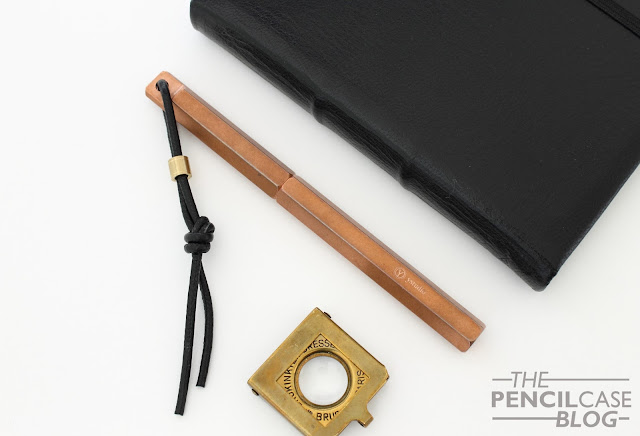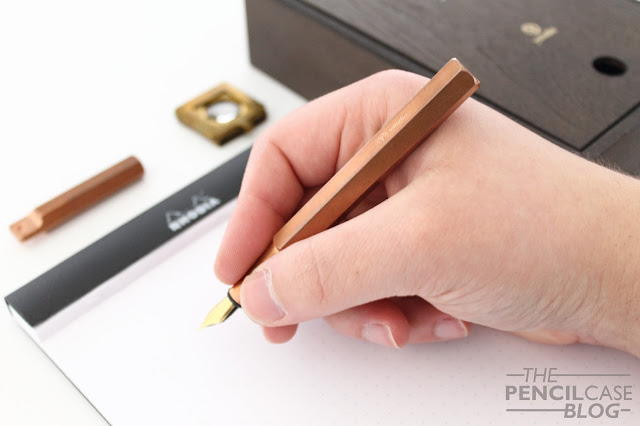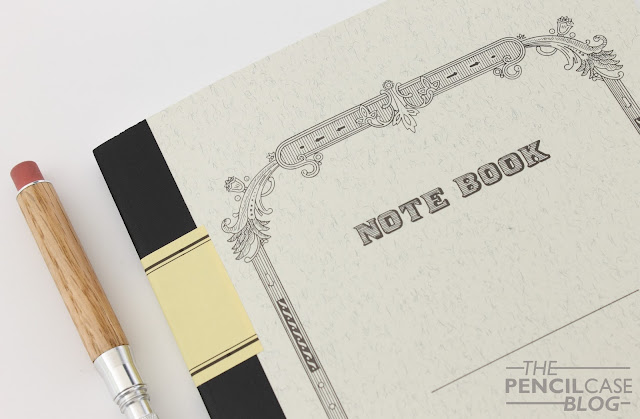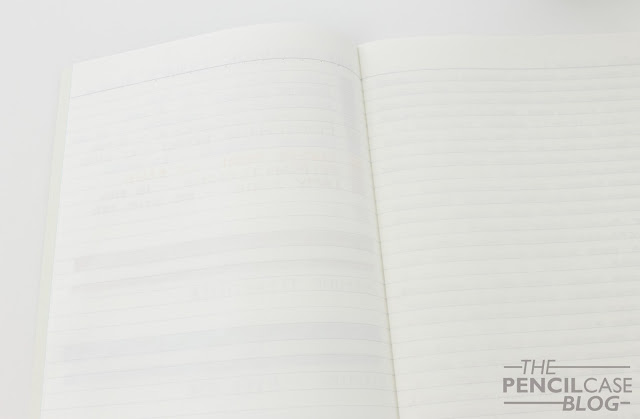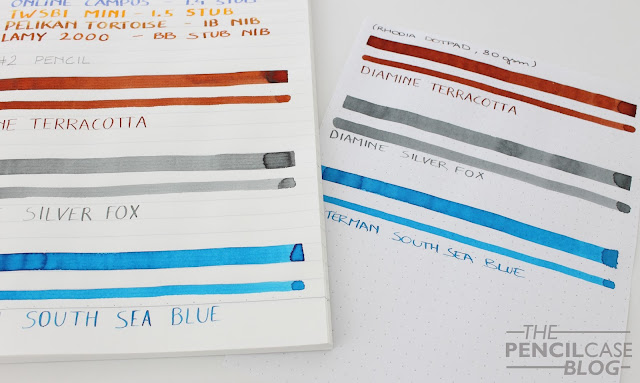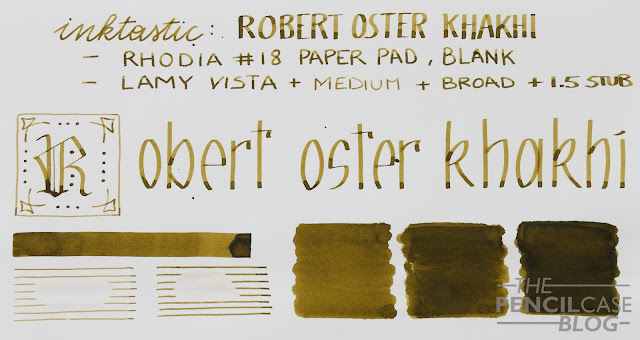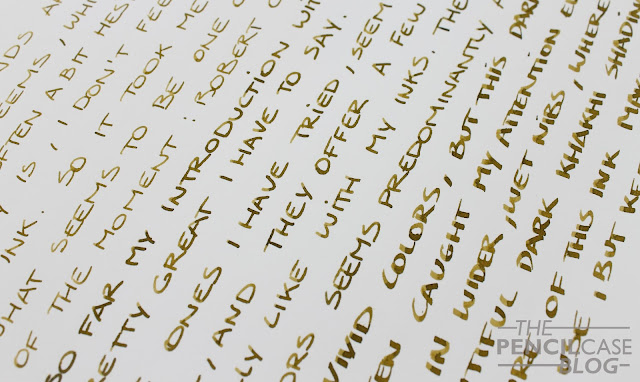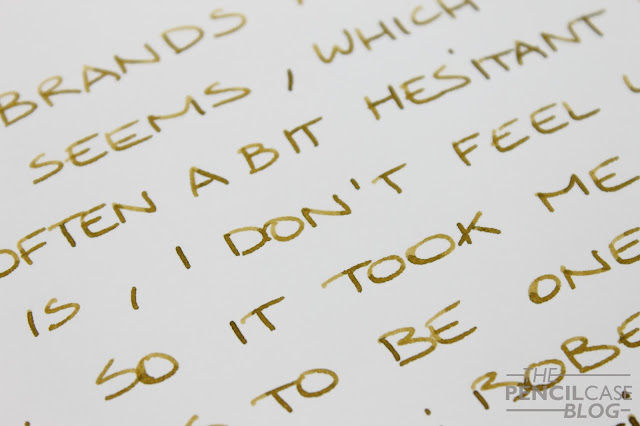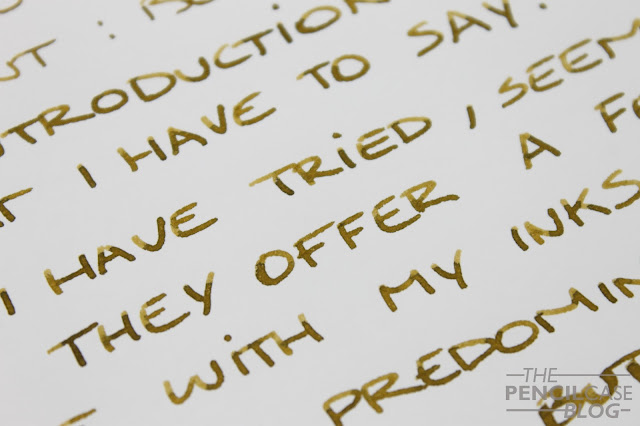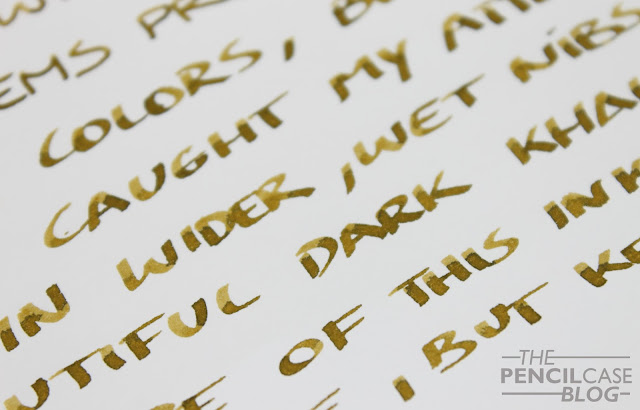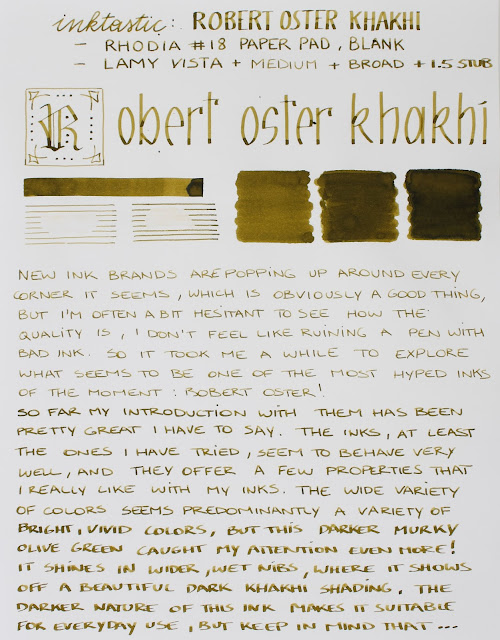Ystudio only very recently hit the fountain pen market, but they sure made quite an entry! Especially on Instagram their two new fountain pens -simply called the 'portable' and 'desk' fountain pens- have been hot items amongst some of the biggest influencers in the community (Brad from Penaddict, Catharine Mi-Sook, and Azizah from Gourmetpens to name a few). Needless to say I was quite eager to give it a try for myself, so I was very happy when Amsterdam-based design store Kohezi contacted me to see if I was interested in trying one out as well!
There's often a discussion about new brands and products not being innovative enough, that there's a lack of 'exciting' products....Well, if this pen from Ystudio can't prove the opposite, I think I'm out of arguments.
The Ystudio portable fountain pen perfectly illustrates why I have been quite 'into' designer pen brands recently. There seems to have been a surge of new small pen brands popping everywhere, which I think has a lot to do with crowdfunding websites like Kickstarter. Platforms like this offer the opportunity to designers and creative individuals to step into the world of (fountain) pens. These design brands offer a creative and fresh look at the products we use everyday. Ystudio happens to be a 'traditional' brand that didn't take the crowdfunding route, but they still fit that category of 'young and fresh' perfectly. They offer a product that is different, something people instantly notice and recognize.
 |
| Incredible packaging for a pen in this price range! |
The pen itself, called the 'portable classic', is a smaller pen with a hex profile. Ystudio describes itself as a design studio that tries to capture and honor the traditional Eastern culture, and I think they succeed quite well at doing so. The pen could be described as minimal, but at the same time it appears vintage and rustic. The complete package -together with what could be the most elaborate packaging I've ever seen on a pen in this price range- shows a clean aesthetic but retains a very obvious traditional and 'vintage' vibe.
I might sound a bit poetic, but that's really how this pen makes me feel. It has character, and it's made to develop even more character over time. There are two versions of the Portable available, 'Classic' which is this raw copper version pictured here, and 'Brassing' which is a brass version covered in black laquer. They will both change over time, the black laquer on the Brassing will slowly wear off (or can be sanded off with the included sandpaper), the copper version will develop a beautiful patina over time.
The name of the pen says it all, the Portable is made to be, well... portable! It comes with a wooden storage tube that holds the pen. The top of the cap is pinched and has a hole that allows it to be attached to one of two included leather strings. Put all these things together, and you can attach the Ystudio Portable to a backpack or purse, while keeping it protected inside the wooden tube.
My opinion about this system is quite divided. On one side I think it's unique and ingenious, cleverly designed as well. But on the other side I find it a bit bothersome. I don't feel like hanging the pen inside its' wooden case somewhere where you risk it banging into everything (I don't think the wooden case would hold up very well to that kind of abuse), and it sounds a bit risky to hang a 140$ pen on the outside of a backpack, ready to get lost. I appreciate the effort they put into designing this system, and I'm certain it'll offer functionality for some, just not for me I'm afraid.
 |
| L to R: Lamy 2000, Lamy Safari, Ystudio portable, Namisu Orion, Namisu X-01 |
But so far for the negative side, because the pen itself is totally my kind of thing. It measures 13.8cm closed (5.4'') and 11.9cm (4.7'') without the cap. The barrel and cap have a diameter of 1.2cm (0.46''), but the section is considerably narrower (8mm/0.31'' on average). All around, the Ystudio Portable is a noticeably smaller pen. On top of that, the lack of taper in the design makes it impossible to post the cap, so size will be an important detail to consider. I found the narrow section to draw my grip forward towards the nib, which helped keep the size manageable, but if you persistently grip it higher up the barrel, you'll notice it's quite short.
The copper construction adds noticeable heft to this small pen (around 72g total), without making it feel overly heavy. I was afraid the section would prove too narrow to be comfortable, but it's actually not that bad. It required some time for me to get used to it because I usually tend to lean towards larger pens, but found it quite pleasant to use, even for longer writing sessions. If you prefer a larger pen, the Ystudio Desk pen might be ideal for you, but the trade-off is of course portability.
The Portable comes with a smaller #5 steel nib, made by Shmidt. While Shmidt converters are practically an industry standard, their nibs are actually not that common to come by. Designwise I personally prefer Bock nibs over this. It's a standard-looking nib with the usual classic flourishes (something less cluttery might've looked better on a clean, minimal pen like this). Performance-wise I have nothing to complain about. The medium nib is stiff as a nail but runs true to size and lays down a consistent, juicy line. I never had any issues with hard starts or skipping.
 |
| Quite a narrow section, but surprisingly comfortable |
For a first venture into fountain pens, I think Ystudio did a pretty great job. You get a product with a unique design and concept, and the complete package is well-made with an eye for detail. That's the least you should expect, because at 140EUR for the Portable fountain pen, and 160EUR for the Desk version, they don't exactly come cheap. Availability also depends on where you live, as they seem to mostly be available in Europe through Kohezi and a few other pen stores online.
Note: This product was sent to me by Kohezi, free of charge, so I could write this review. I was in no way influenced in the making of this review, the opinions shared in this review are completely my own! This post does not contain affilate links.




